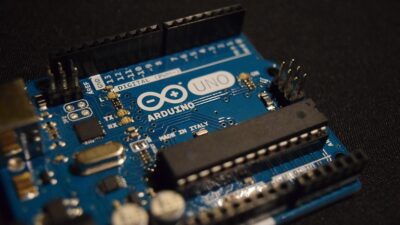In an age defined by rapid technological change and ever-increasing consumer expectations, businesses are reevaluating their operational frameworks, particularly regarding data processing. The rise of the “Edge Revolution” signifies a monumental shift towards localized processing, where data is processed closer to the source rather than in centralized data centers. This transformation promises faster decision-making, improved efficiency, and enhanced customer experiences. But why are businesses making this significant pivot, and what does it mean for the future of technology and commerce?
Understanding Edge Computing
Edge computing refers to the practice of processing data at the edge of the network, closer to where it is generated, rather than relying on distant cloud servers. This model enables real-time data processing, minimizing latency and optimizing bandwidth use. As IoT devices proliferate, the need for localized processing has never been more pronounced.
Key Drivers of the Edge Revolution
-
Latency Reduction: One of the primary benefits of edge computing is reduced latency. For applications like autonomous vehicles, smart manufacturing, and augmented reality, milliseconds matter. Processing data closer to the user or device cuts down on the delays experienced when data must travel to a centralized server.
-
Bandwidth Optimization: With the explosion of data generated by IoT devices, transmitting all that data to the cloud can overwhelm existing network bandwidth. By processing data locally, only relevant information needs to be sent to the cloud, significantly relieving network congestion.
-
Cost Efficiency: Centralized cloud computing can lead to high operational costs, particularly around data transmission and storage fees. Edge computing lowers these costs by decreasing the amount of data sent over the network and minimizing the need for expensive data center resources.
-
Enhanced Security and Compliance: Data privacy concerns continue to escalate, making compliance with regulations like GDPR and CCPA crucial for businesses. By processing data locally, companies can maintain better control over sensitive information, significantly reducing the risk of data breaches.
- Increased Reliability: Edge computing systems can function independently of cloud services. This means that even if a central server goes down, local devices can continue to operate, providing greater reliability in critical systems.
Industries Leading the Charge
Several sectors are at the forefront of the edge revolution:
-
Manufacturing: Smart factories capitalize on edge computing to monitor machinery in real-time, predict maintenance needs, and optimize production lines. This can result in significant cost savings and increased productivity.
-
Healthcare: With the rise of telemedicine and wearable health tech, edge computing is vital. It allows for real-time patient monitoring and immediate analysis of data, facilitating timely medical intervention and personalized care.
-
Retail: Retailers are harnessing localized processing to analyze customer data in real time, improving inventory management, and enhancing customer experiences through personalized recommendations.
- Transportation: The automotive industry is leveraging edge computing in autonomous vehicles for immediate data processing, essential for safe navigation and decision-making on the road.
Challenges and Considerations
Despite its myriad benefits, the shift to edge computing is not without challenges. Businesses must consider:
-
Infrastructure Investment: Transitioning to an edge framework often requires extensive investment in hardware and software to support localized data processing.
-
Skills Gap: With edge computing being a relatively new paradigm, there is a shortage of skilled professionals capable of managing and maintaining these systems.
- Interoperability: As organizations adopt various edge devices and platforms, ensuring they can communicate and operate seamlessly remains a critical hurdle.
Conclusion: A Shift to the Future
As the Edge Revolution unfolds, businesses are recognizing that the traditional centralized model may no longer meet the demands of a fast-paced, data-driven world. Localized processing not only enhances operational efficiency but also empowers companies to deliver superior customer experiences.
As more organizations embrace edge computing, we can anticipate a future where data flows more freely, decisions are made in real-time, and innovative solutions to old problems emerge. The age of real-time responsiveness and agility is upon us, and businesses that adopt this paradigm will certainly find themselves ahead of the curve. In a world increasingly driven by speed and efficiency, the edge may very well redefine the landscape of technology and commerce as we know it.



